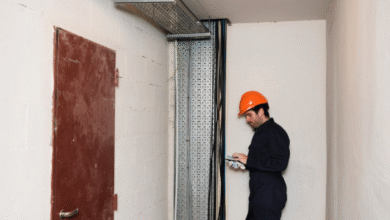The Role of Hospital Interior Decoration in Patient Comfort and Well-being

When we think about healthcare, we often focus on medical expertise and cutting-edge technology. Yet, there’s an aspect that plays a surprisingly influential role in the healing process: hospital interior design. The layout, colors, textures, lighting, and furniture choices in healthcare settings can have a direct impact on both patients and healthcare professionals. From the moment a patient steps into the facility, the environment can set the tone for their experience, making hospital interior decoration a critical element in overall patient care.
In recent years, healthcare providers have increasingly understood the importance of aesthetic appeal blended with functionality. Hospital interior design is no longer about plain white walls and fluorescent lights. Instead, it incorporates thoughtful planning that addresses patient comfort, safety, and psychological well-being, while also enhancing the operational efficiency of medical staff.
Why Hospital Interior Design Matters
A thoughtfully crafted hospital environment contributes significantly to patient recovery and staff productivity. Studies have shown that patients in well-designed spaces experience lower stress levels, quicker recovery times, and greater satisfaction with their care. Elements like natural light, calming colors, and intuitive wayfinding systems make a tangible difference.
Furthermore, healthcare professionals benefit from an efficient and pleasant work environment. A hospital that is easy to navigate and offers well-organized spaces helps reduce fatigue and improves staff morale. Hospital interior design must balance medical functionality with aesthetics to meet these diverse needs.
Elements of Effective Hospital Interior Decoration
When focusing on hospital interior decoration, several core elements must be considered to create a patient-centered environment:
-
Color Schemes: Soothing, neutral colors like light blues, greens, and earthy tones help reduce patient anxiety and create a calming atmosphere. Bright, harsh colors can be overwhelming, so thoughtful palette choices are crucial.
-
Lighting: Natural lighting is preferred wherever possible, as it positively affects mood and circadian rhythms. Artificial lighting should be adjustable and designed to avoid glare, providing sufficient visibility while promoting a comfortable setting.
-
Furniture and Layout: Furniture should be both functional and inviting. Waiting areas, patient rooms, and staff lounges should have ergonomically designed chairs and tables that enhance comfort and accessibility.
-
Acoustic Control: Hospitals are often noisy environments. Sound-absorbing materials in walls, floors, and ceilings can help control ambient noise, which is particularly important for patient rest and recovery.
-
Artwork and Greenery: Incorporating artwork and indoor plants can create a more humanized and less clinical environment. Visual interest distracts patients from stress and contributes to a sense of well-being.
The Importance of Reception Hospital Interior Design
One of the first areas visitors and patients encounter is the reception area, making reception hospital interior design especially significant. A well-designed reception area not only provides clear information and direction but also creates a welcoming and professional first impression.
In reception hospital interior design, emphasis should be placed on:
-
Clear Signage: Visitors should be able to easily find information and navigate to their destination.
-
Comfortable Seating: Waiting times can be stressful, so comfortable seating arrangements can help ease patient anxiety.
-
Efficient Workflow: Reception desks should be designed for both privacy and efficiency, allowing administrative staff to perform their duties without unnecessary interruptions.
Patient Rooms: A Sanctuary for Healing
Another essential aspect of hospital interior design is creating patient rooms that act as a sanctuary. These rooms should be designed with elements that promote peace and reduce stress. Features might include adjustable lighting, privacy curtains, personal storage spaces, and easy access to medical equipment.
Importantly, patient rooms should also accommodate family members who may wish to stay with or visit patients, requiring thoughtful seating or sleeping arrangements.
Staff Areas: Supporting Healthcare Professionals
While patient-focused spaces often receive the most attention, staff areas are equally important. Nurses’ stations, break rooms, and administrative offices should be comfortable and efficient. Hospital interior decoration in these areas can directly impact job satisfaction and reduce burnout among healthcare workers.
Technology Integration in Hospital Interior Design
Modern hospitals must incorporate advanced technology while maintaining aesthetic appeal. This includes telemedicine equipment, electronic health record systems, and advanced medical devices. Hospital interior design must consider these needs without cluttering spaces or overwhelming visitors with visible machinery.
For example, patient rooms can be equipped with hidden panels that house technical equipment, keeping the room tidy and serene while ensuring medical staff have what they need readily available.
Safety and Hygiene Considerations
Hygiene is a non-negotiable priority in healthcare environments. Flooring, wall coverings, and furniture should be made from materials that are easy to clean and resistant to bacteria. Hospital interior decoration choices must therefore strike a balance between aesthetics and practicality.
Anti-microbial fabrics, seamless flooring, and hands-free fixtures contribute to creating a safe environment for both patients and staff.
Creating a Holistic Healing Environment
Ultimately, the goal of effective hospital interior design is to create a holistic healing environment. This means considering the needs of everyone who uses the facility—patients, visitors, doctors, nurses, and support staff.
When designing a hospital, collaboration between interior designers, healthcare professionals, architects, and administrators is essential. By working together, they can ensure that every element—from the reception hospital interior design to specialized treatment rooms—supports both physical and emotional healing.
A Trusted Name in Hospital Interior Design
Brands like Hidecor have been instrumental in advancing this approach, blending aesthetics with functionality in healthcare spaces. With a focus on innovative solutions, Hidecor delivers hospital interior decoration that reflects the evolving needs of modern medical facilities while prioritizing patient comfort and well-being.
Conclusion
As the healthcare industry continues to evolve, the importance of hospital interior design cannot be overstated. Thoughtful hospital interior decoration improves patient outcomes, enhances staff efficiency, and builds trust among visitors and patients alike.
From calming color schemes and acoustics to reception hospital interior design that welcomes every visitor with professionalism and warmth, every detail matters. Investing in these aspects is not just about appearances—it’s about creating an environment that fosters healing in every sense of the word.








